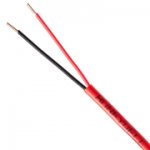electrofelon
Senior Member
- Location
- Cherry Valley NY, Seattle, WA
I never learned any FA stuff, its kinda a separate trade where I learned. I know some basics, but thats it. I have a job that I just need to add in one strobe and one smoke, just looking for some guidance. The device/system programming will be taken care of by others, but I need to run and tie in the wiring to the existing loop. I dont know if it is class A or not, and Im not sure if that matters. This is in upstate NY, its pretty unregulated but I dont know what code or standard if any applies. Attached is a picture of the strobe, its simplex. So here are my questions:
1) So basically when I add a device, can I tee/splice off an existing loop with a branch, or do I need to rearrange it so the loop goes both in and out of the new device?
2) Can someone point to a basic smoke detector for this system? I got the new strobe by looking at what was there, but I forgot to look at a smoke and the job is kinda far away.
3) The NAC conductors are red and black as expected, but the smokes are a cable assembly consisting of two ~18 guage wires. I am used to seeing blue and white. Is that abnormal?
Thanks.
1) So basically when I add a device, can I tee/splice off an existing loop with a branch, or do I need to rearrange it so the loop goes both in and out of the new device?
2) Can someone point to a basic smoke detector for this system? I got the new strobe by looking at what was there, but I forgot to look at a smoke and the job is kinda far away.
3) The NAC conductors are red and black as expected, but the smokes are a cable assembly consisting of two ~18 guage wires. I am used to seeing blue and white. Is that abnormal?
Thanks.




